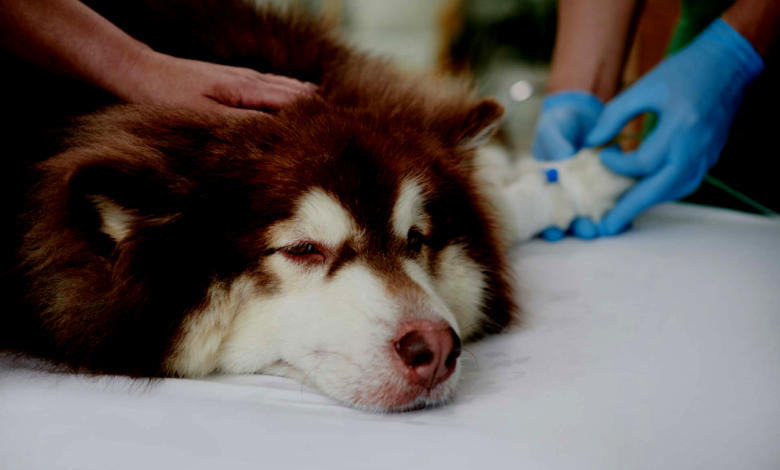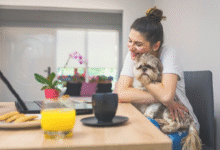
Understanding Common Household Toxins and Their Effects on Pets
Learn about common household toxins dangerous to pets symptoms of poisoning and how to protect your furry friends. Essential pet safety guide.
Our homes are filled with everyday items that, while harmless to humans, can pose serious threats to our pets. From cleaning supplies to certain foods, common household toxins lurk in places we might not expect, putting curious dogs, cats, and other pets at risk of poisoning. Pets explore the world with their mouths, making them vulnerable to ingesting dangerous substances. As responsible pet owners, it’s crucial to recognize these hazards and take steps to minimize exposure, ensuring our furry companions stay safe and healthy.
Many common household toxins are found in products we use regularly, including medications, plants, and even some foods we enjoy. Even small amounts of these substances can cause severe reactions, ranging from gastrointestinal distress to organ failure or death. By understanding which items are hazardous, how they affect pets, and what preventive measures to take, we can create a safer environment for our beloved animals. This article explores the most dangerous household toxins, their effects on pets, and practical ways to protect them from accidental poisoning.
Understanding Common Household Toxins and Their Effects on Pets
Human Medications
One of the most frequent causes of pet poisoning is accidental ingestion of human medications. Pain relievers like ibuprofen and acetaminophen are extremely dangerous for pets, especially cats, as they can cause kidney failure, liver damage, and gastrointestinal bleeding. Household Toxins, ADHD medications, and even vitamins can also be harmful, leading to seizures, elevated heart rates, or neurological issues. Always store medications in secure cabinets and never administer human drugs to pets without veterinary guidance.
Toxic Foods
Most Dangerous Human Foods for Pets
Several common human foods can be life-threatening to pets, even in small quantities. Chocolate (especially dark and baking varieties) contains theobromine, which dogs cannot metabolize effectively, potentially causing cardiac arrhythmias and seizures. Household Toxins and raisins may induce sudden kidney failure in dogs, with no known safe dosage. The allium family (onions, garlic, chives) destroys red blood cells in both dogs and cats, leading to hemolytic anemia. Perhaps most alarming is xylitol, an artificial sweetener found in sugar-free gum, candy, and peanut butter that causes rapid hypoglycemia and acute liver necrosis.
Prevention and Emergency Response
Pet owners should completely avoid feeding these dangerous foods and ensure they’re stored securely in pet-proof containers or cabinets. Be particularly vigilant about counter-surfing dogs and trash-digging pets who may access these toxins. When Household Toxins meals containing these ingredients, clean all surfaces thoroughly. If accidental ingestion occurs, immediate veterinary care is critical especially for xylitol exposure where treatment is time sensitive. Keep packaging information available to help veterinarians determine toxicity levels and never attempt home remedies without professional guidance.
Household Cleaners and Chemicals
Bleach, detergents, and disinfectants can cause severe chemical burns, respiratory distress, or poisoning if ingested or inhaled by pets. Even small amounts of antifreeze, which contains ethylene glycol, can be fatal due to its sweet taste that attracts Household Toxins. Symptoms of poisoning include vomiting, lethargy, and kidney failure. Opt for pet-safe cleaning products and ensure chemicals are stored securely.
Plants and Flowers
Most Dangerous Houseplants for Pets
Several popular houseplants pose severe risks to pets, with certain varieties being particularly lethal. Lilies (including Easter, Tiger, and Daylilies) are extremely toxic to cats, capable of causing acute kidney failure from just a few pollen grains or leaves. Sago palms, commonly used in landscaping, contain cycasin, which triggers liver failure in dogs and cats. Other hazardous plants include aloe vera (vomiting, diarrhea) and Household Toxins (oral irritation, kidney damage). Even small exposures to these plants require emergency veterinary care.
Prevention and Safe Alternatives
Before introducing any greenery to your home, always cross-check plants against the ASPCA’s Toxic and Non-Toxic Plant Database. Opt for pet-safe alternatives like spider plants, Boston ferns, or African violets. Keep toxic plants completely out of reach even hanging planters may not deter agile cats. If you suspect ingestion, look for symptoms like drooling, pawing at the mouth, or lethargy, and contact your vet immediately with the plant’s name (or a photo) for targeted treatment. For high-risk plants like lilies, consider removing them entirely from pet-accessible Household Toxins.
Rodenticides and Insecticides
Poisons designed to kill rodents or insects are highly toxic to pets. Rodenticides cause internal bleeding, seizures, or kidney failure, while insecticides like snail bait or flea treatments can lead to tremors and neurological damage. Always use pet-safe pest control methods and store these products in inaccessible areas.
Essential Oils and Fragrances
While aromatherapy is popular, certain essential oils such as tea tree, eucalyptus, and peppermint are toxic to pets, causing skin irritation, respiratory issues, or liver damage. Diffusers and liquid potpourris can also be hazardous if Household Toxins. Consult a veterinarian before using essential oils in a pet-friendly home.
Prevention and Emergency Response
Preventive Pet-Proofing Measures
To safeguard pets from common household toxins, proactive pet-proofing is crucial. Store all hazardous materials including medications, cleaning supplies, chemicals, and toxic foods in securely locked cabinets or high shelves that pets cannot access. Choose pet-safe alternatives for household cleaners and pest control products whenever possible. Additionally, keep trash cans covered with tight-fitting lids to prevent curious pets from scavenging dangerous items like food scraps, spoiled goods, or discarded packaging that may contain residues of harmful substances.
Emergency Response for Toxin Exposure
If you suspect your pet has ingested a toxic substance, immediate action is vital. Look for symptoms such as vomiting, drooling, lethargy, seizures, or difficulty breathing. Contact your veterinarian or the ASPCA Animal Poison Control Center (888-426-4435) right away do not wait for symptoms to worsen. If advised by a professional, you may need to induce vomiting (but never do this without guidance, as some toxins can cause more harm if Household Toxins). Keep a pet first-aid kit handy with activated charcoal (only to be used under veterinary direction) and have your pet’s medical records easily accessible in emergencies. Quick intervention can mean the difference between life and death.
Read More: Traveling with Pets Safety Tips for Road Trips and Flights
Conclusion
Protecting our pets from common household toxins requires awareness and proactive measures to eliminate potential dangers in their environment. By familiarizing ourselves with hazardous substances including toxic foods, medications, cleaning products, and plants we can significantly reduce the risk of accidental poisoning. Pet-proofing our homes, using pet-safe alternatives, and storing dangerous items securely are essential steps in safeguarding our furry Household Toxins. Remember, prevention is always better than treatment when it comes to keeping our pets safe from these hidden threats.
When accidents do occur, recognizing the signs of poisoning and acting quickly can save a pet’s life. Immediate veterinary attention is crucial if exposure to common household toxins is suspected. By staying informed and vigilant, pet owners can create a healthier, toxin-free home where their beloved animals can thrive. Ultimately, a little precaution goes a long way in ensuring our pets live long, happy lives free from preventable harm.
FAQs
What are the most dangerous foods for pets?
Chocolate, grapes, onions, garlic, and xylitol-containing products are highly toxic. Even small amounts can cause severe health issues or death.
How can I pet-proof my home against toxins?
Store chemicals, medications, and toxic foods in secure cabinets. Use pet-safe cleaners and research plants before bringing them indoors.
What should I do if my pet ingests a toxic substance?
Contact your veterinarian or the ASPCA Poison Control Center immediately. Do not induce vomiting unless instructed by a Household Toxins.
Are essential oils safe for pets?
Many essential oils, including tea tree and eucalyptus, are toxic. Avoid direct application or diffusion in areas pets frequent.
Can human medications be given to pets?
Never give pets human medications without veterinary approval. Even small doses of common drugs like ibuprofen can be lethal.







